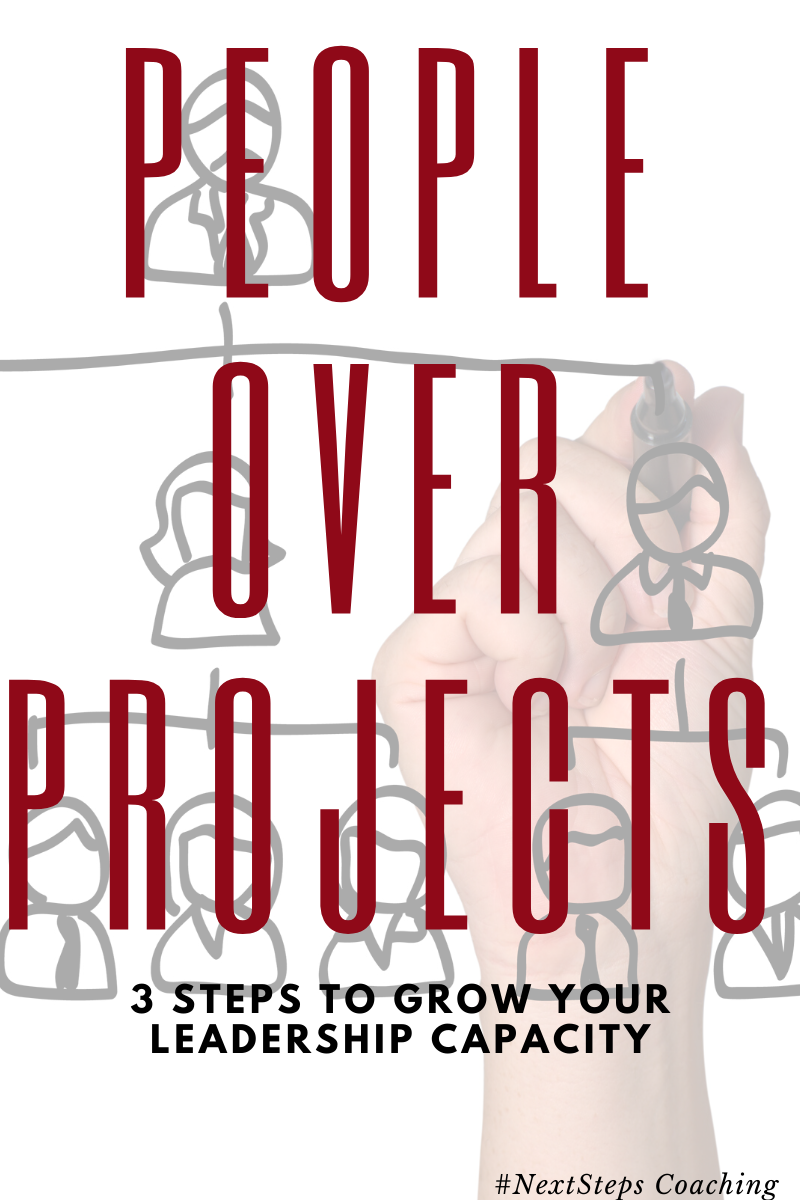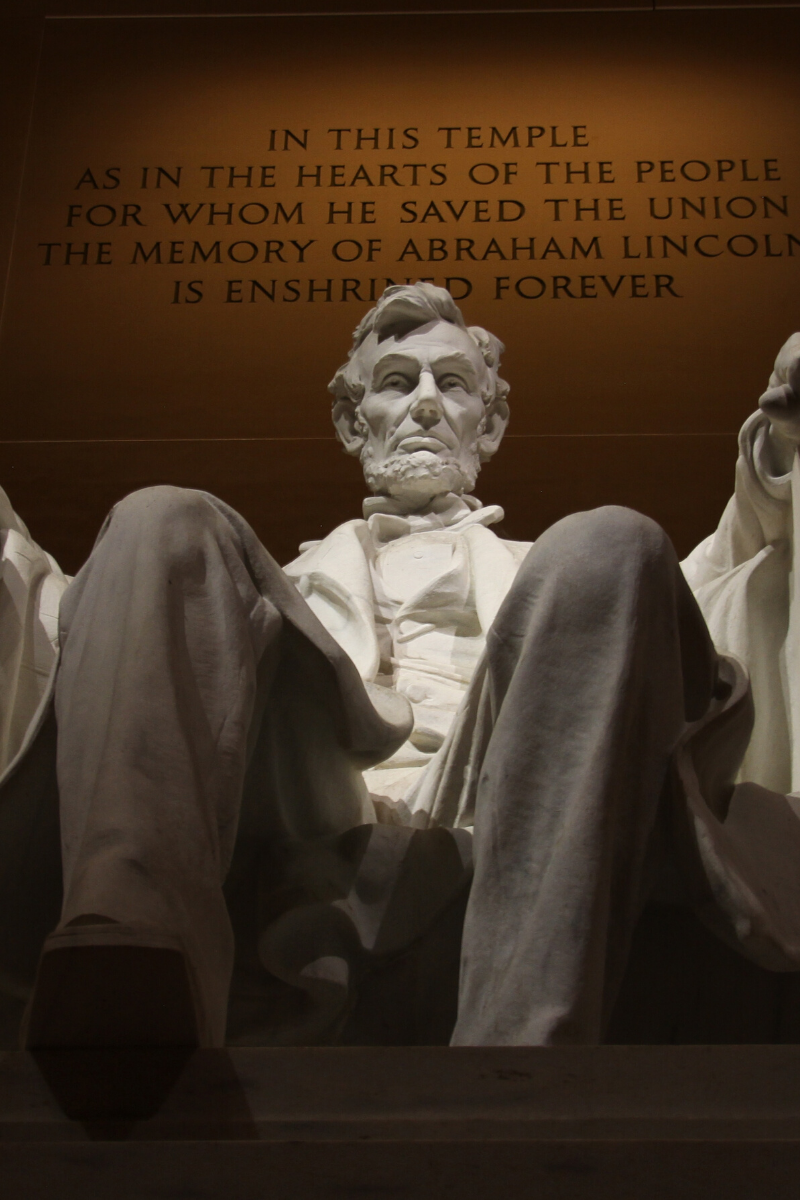
As a goal-focused person, one of the hardest lessons I ever had to learn was to choose people over projects.
A Changing Perspective
Several years ago, while living in Denver, I was helping to lead the church I belonged to through a transition. We were tasked with taking years of established tradition and creating something new. We had to honor the old while adapting and evolving into something new.
Honor the past.
Build the future.
As with any such endeavor, emotions were high. There were literally people still on the attendance roster that were there when the church started. With member number one still active, I literally had someone who could tell me in all seriousness, “We’ve never done it that way before.” 
How do you handle the need for change without destroy what has been? How can we, as leaders, honor and celebrate the past while creating something new? Something beautiful? Something expansive?
We choose the people over the projects.
People Over Projects
I remember the moment this crystalized for me. I was sitting in the living room with my wife after I had received some negative and unfair criticism. In that situation, my natural inclination is to fight back. To wound. I wanted to hurt them the way I had been hurt.
But I also knew that I had to model something different. If those I was trying to serve were ever going to see the picture I was trying to paint, I’d have to expose them to something different.
So I mentioned to my wife, “I don’t know how to respond yet, but if I win this battle but lose the relationship, I’ve lost everything of significance.”
That sparked this idea of “People Over Projects.”
Together, we can do so much more than we can on our own. As leaders, we are called to not just lead our people, but to serve them as well.
Leading Our Teams
I have seen this idea now play out over the last seven years in a variety of fields, locations, teams, and organizations. The truth has remained. Leaders who are willing to choose the health of their employees and relationships over the bottom line numbers end up winning.
Leaders that care more about profit than people end up having neither.
Why?
Because no one will follow a leader that makes them feel dispensable. Great employees, excellent team members, world-class staff all have one thing in common: a leader that believes, inspires and equips.
Leaders that are willing to choose people over projects see amazing results in all categories.
Three Tips For Growth
Looking for ways to choose people over projects? Look no further! Here are three of my best tips to help you:
1.) Focus on people-development.
As leaders, we should always be concerned with how our people are growing.
We also need to realize that people have lives outside of work.
An owner of a business once told me that he was willing to work 24-hours a day on his business and he expected the same from his employees.
Employees usually did .. early on during the honeymoon phase. Once that time period ended, however, employees wanted their normal lives back. Family dinners were missed. Vacations postponed. Weekend naps interrupted.
Excelling leaders care about the whole-being of their people, not just the 9-5 shift they are working.
One way you can do this is to help your people get the right things done. When the 9-5 is taken care of effectively, they are free to enjoy their life outside of the cubicle.
2.) Focus on the right numbers.
Number matter. The problem is that we tend to focus on the right numbers. Built off of the last point, look for numbers where people are growing.
Sales are a by-product of other things done right.
Do you want better sales? Provide better customer service.
Want better customer service?
Invest in your customer service employees.
When Bill feels valued, appreciated, and integral to the health of the company, he works with more clarity, more integrity, more intensity, and greater levels of satisfaction.
The customer feels that and responds.
Even though Bill isn’t in sales, he directly affects the bottom line and the sales numbers.
Like the janitor that believed in NASA’s mission when approached by JFK with the question of what he was doing responded, “I’m putting a man on the moon.”
He bought into a larger mission and saw what was at the time beyond him.
3.) Don’t be afraid to try something new.
I’ve always found it funny that leaders are criticized for discovering a new idea or reading a new book and trying to implement it. One of the criticisms I’ve often heard is, “You’re just trying this because you learned a new skill in a book.”
Of course, I am.
That’s how learning works!
Learning is about discovering new ideas and implementing what works. But how will we know what works if we don’t give something new a try?
Maybe for you, that directly relates to your people. Maybe you want (or need) coaching for you or your team.
Or maybe it’s a new concept, time-saving strategy, or brainstorming topic.
Perhaps the conference you just attended wants you to offer more flexible working hours and you’re convinced to give it a try.
Whatever it is, go for it!
Involve your people. Offer to create an experiment (scientists do this because they don’t know or can’t guarantee the final result) and tweak what didn’t work.
Whatever it is, just keep trying. Push through fear and criticism and lead boldly.
Conclusion
Every day we are presented with a list of objectives. As a goal-oriented person, and a success coach, much of what I do is help people reach their goals, push through obstacles, and experience success.
But we must also remember that we never choose projects over people. We need each other, go farther together, and ultimately only ever find lasting success when it can be shared.








